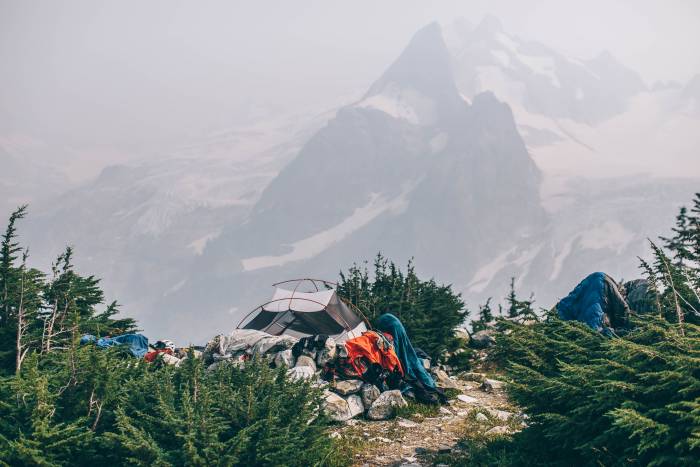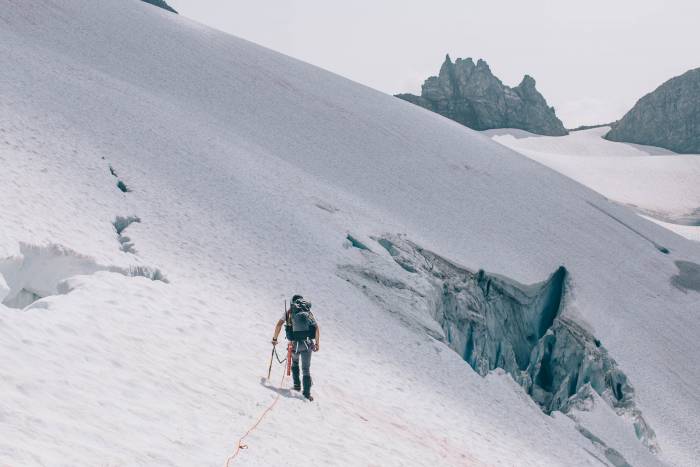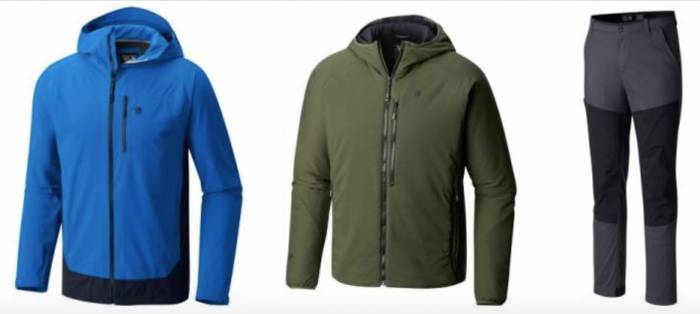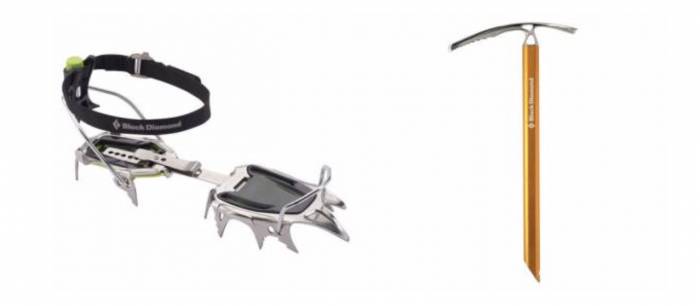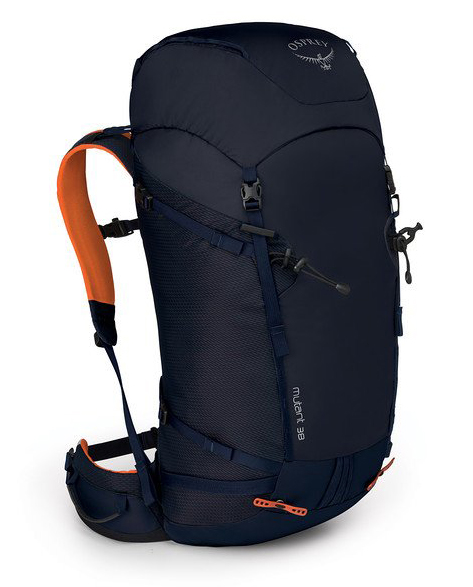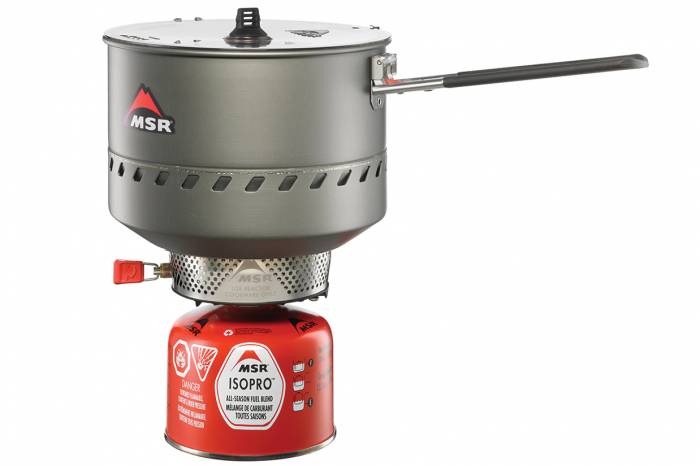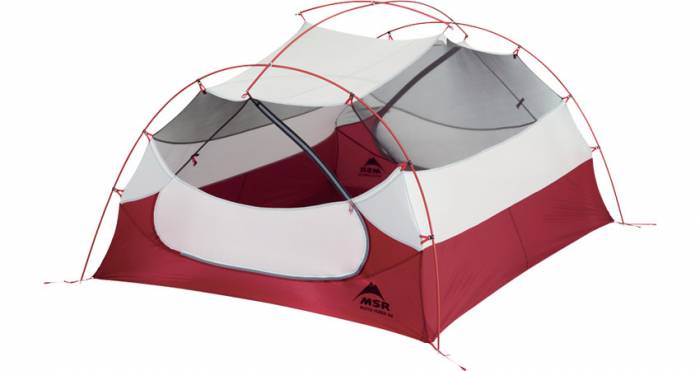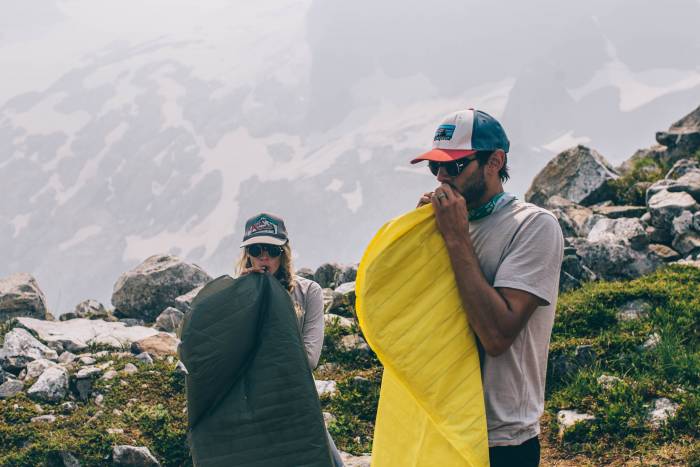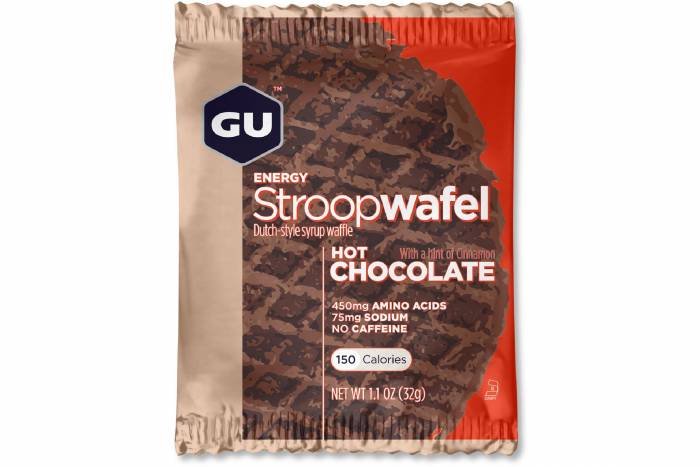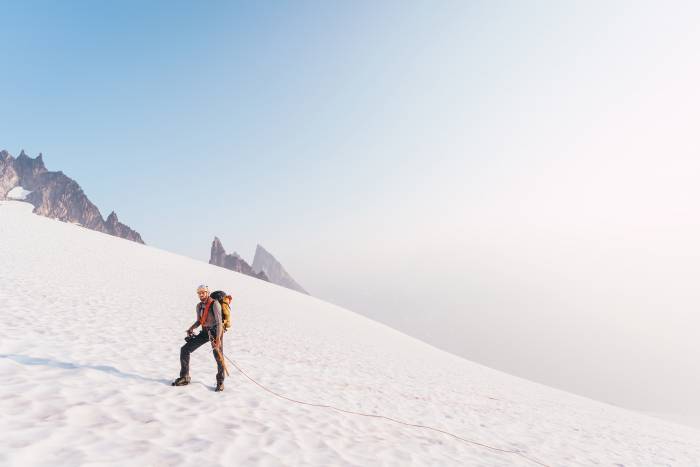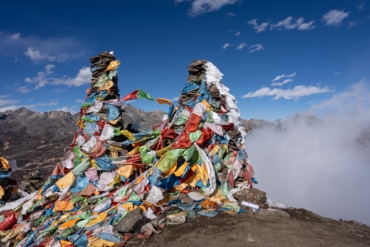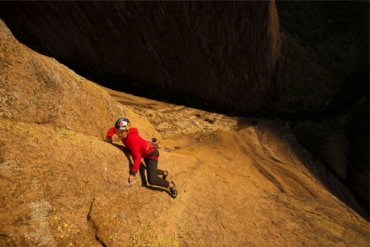The Ptarmigan Traverse is unrelenting: 35 off-trail miles with 25,000 feet of elevation change along a series of jagged peaks in Washington state’s North Cascades. Here’s all the gear you need to suffer through it.
We woke at first light, our bags damp from morning dew. After a long day of scrambling the Ptarmigan Traverse in heavy mist, the clouds split just before sunset. We opted to leave the rainfly off the tent with hopes of seeing stars. Despite the wet morning, it was worth it. The heavens seem so much closer when you’re sleeping in the alpine.
We packed up quietly, taking down the tents, stuffing gear into packs, and shoveling down oatmeal and instant coffee. The next few miles of the lower 48’s classic mountaineering route were visible from our campsite: a big climb up a scree-laden slope, a thin ridge run, and a long glacial crossing.
The Ptarmigan Traverse: A Sufferfest
Pioneered in the late 1930s, the Ptarmigan is widely known as one of the most beautiful mountaineering routes in the country. Its 35 miles wander off trail past a handful of surreal alpine lakes, across a half-dozen glaciers, and along ridges with eye-popping vistas.
We endured the 25,000 feet of elevation change as we hiked end-to-end in three days. But some groups take twice as long to soak in the scenery. Regardless of how much time you plan to spend on the traverse, proficiency in glacial travel and backcountry navigation is necessary. While parts of the route are well trodden, much of it leaves you feeling alone. It’s important to be self-reliant.
To complete it safely in three days, we needed to pack light, paring our gear down to the essentials. Dehydrated food, versatile clothing, minimal beer, and only one change of socks. I aimed to keep my pack around 30 pounds, including group gear like the rope, tent, and stove.
After a long game of gear Tetris, here’s what I packed.
Ptarmigan Traverse: How to Pack Light
Mountain Hardwear Ozonic Shell ($200), Kor Strata Hoody ($220),
and AP Pants ($90)
This kit could get you to the other side of the world and back, easily. The Ozonic doubles down as a windbreaker for early morning or chilly passes, the Kor Strata breathes well without sacrificing warmth, and the AP pants are the last pants you’ll buy — I promise. If you’re going to push your paygrade, at least do it in comfort.
Black Diamond Vision Harness ($150), 7.9 Dry Climbing Rope ($200), Vapor Helmet ($140), Snaggletooth Crampons ($220), and Raven Ultra Ice Axe ($120)
There are very few equipment companies that have stood the test of time like Black Diamond, which has been producing top-shelf products for over five decades. Known for its Camalot, Black Diamond now manufacturers almost every piece of gear you need for technical climbing and mountaineering.
The new Vision harness is about as light as you can get, and the 7.9-mm dry rope is ideal for glacial travel, and the Vapor helmet is also light without compromising safety.
Snaggletooth Crampons are versatile — they have both vertical and horizontal points, good for glacial travel and more technical ice climbing. The Raven Ultra is BD’s lightest ice axe, great for long, hard days in the mountains. Most importantly, this entire setup is reliable day in and day out.
Osprey Mutant 38 Technical Pack ($170)
A longtime fanboy of Osprey packs, I recently got my hands on its new Mutant 38 for some stout alpine objectives. My immediate takeaway: The Mutant is everything you want without anything you don’t.
It was designed by guides for routes like the Ptarmigan, with a comfortable and snug fit, additional snow and ice gear loops, and easy rope carry. With 38 liters, I had enough space for three days without much to spare.
MSR Reactor Stove with 2.5L Pot (originally $260, on sale for $195)
We wanted to bring a lightweight stove that could boil water quickly and melt snow in a pinch. The Reactor is the best out there. With the 2.5-liter pot, we were able to boil enough water for all five of us in one fell swoop, making life easy.
MSR Mutha Hubba NX 3-Person Tent ($500)
At night, the Mutha Hubba is a spacious three-person tent with room in the vestibule for packs, rope, and miscellaneous gear. It’s built to stand up in wind and rain, without breaking your back as you slog it over glaciers and down loose scree slopes.
Mountain Hardwear Ratio 32 Bag ($230) and Therm-a-Rest NeoAir XLite Pad ($200)
The Ratio has become my go-to bag for almost every type of trip. I sleep relatively warm, so others might prefer a 15-degree bag. But I love the Ratio because it’s simple, durable, and packs very small.
I often bring a warmer sleeping pad — typically the Therm-a-Rest SV. But I needed to save space and weight, so I opted for the NeoAir, the lightest pad on the market. Needless to say, it treated me well.
GU Stroopwafels ($22)
Who doesn’t love a delicious snack? This one packs carbs, amino acids, and electrolytes all into one tasty cookie. I feast on GU treats on long runs and long-distance hikes alike.

